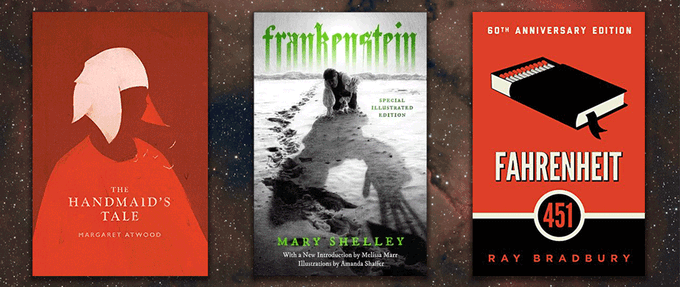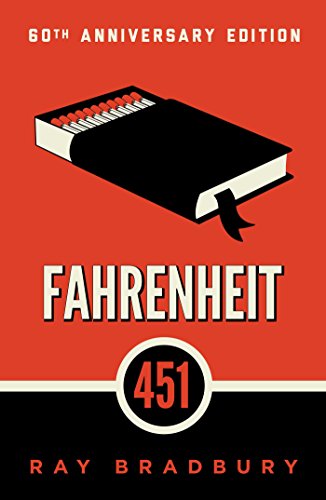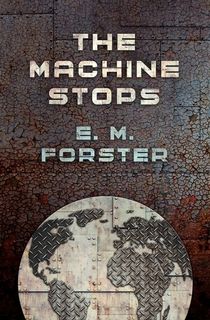The most terrifying thing about the future is that we may have already read (and ignored) the warning label….
When diving into decades-old classic novels, readers can find astonishingly accurate glimpses of our modern world within their pages. The technologies we’ve come to rely on, the societal structures we’ve built, and even the ways we govern ourselves sometimes seem to have been imagined long before their time. It’s enough to make you wonder: were these authors simply speculating, or did they truly see where the world was heading?
From the complex implications of genetic engineering and the rise of the Metaverse, to the persistent threats of nuclear warfare and ubiquitous surveillance, we explore how these 10 books—with their in-depth articulations of contemporary medicine, politics, and technology—align eerily well with the ongoing developments of the modern world.
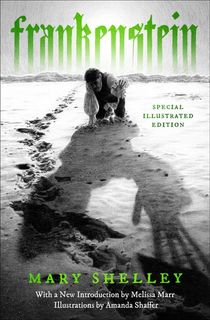
Frankenstein
Driven by an obsessive ambition to unlock the secrets of life and death, scientist Victor Frankenstein secretly builds a sentient, human-like creature but is immediately repulsed by his work. He abandons his creation, unleashing a tragic and vengeful entity that stalks Victor and ruins his life, forcing him to confront the moral horror of his scientific transgression.
Mary Shelley’s 1818 novel laid the groundwork for modern discourse on bioethics and the limits of science. It foreshadowed today's debates surrounding genetic engineering and the moral responsibility scientists have when creating new life with unforeseen societal consequences.
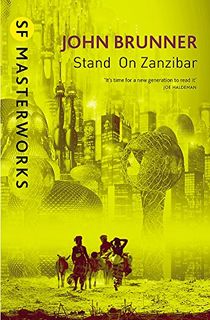
Stand on Zanzibar
In an overpopulated, chaotic 21st-century Earth, a complex cast of characters navigates a potential genetic revolution. The central plot follows an American intelligence officer and his roommate as they track a global crisis tied to accelerated genetic manipulation in Asia.
Published in 1968, the novel perfectly captures the strain of overpopulation, predicting global crises and mandated social solutions. More strikingly, it envisioned a world saturated with digital communication, social media influence, and pervasive information overload.
Brave New World
In a future London, citizens are genetically engineered, conditioned from birth into rigid social castes, and kept content through synthetic entertainment and a steady supply of the mood-stabilizing drug Soma. The story follows Bernard Marx, an alienated individual, who attempts to integrate a "Savage" from a reservation into this utopian society, only to watch the manufactured perfection quickly unravel.
This 1932 classic foretold a society where control is maintained by pleasure, not pain, predicting our modern preoccupation with rampant consumerism and instant gratification. It also anticipated the heavy reliance on pharmaceuticals for mood regulation and the pacifying effects of mass entertainment.

Fahrenheit 451: A Novel
Fireman Guy Montag's job is not to put out fires, but to burn books—the source of conflict in a society obsessed with instant, trivial entertainment. After meeting a free-thinking young neighbor, Montag begins to question his life and secretly hoards books, forcing him to choose between remaining a tool of the oppressive state or becoming a dangerous rebel against the system.
Bradbury’s 1953 dystopia is famous for predicting not only government censorship but also the societal erosion caused by short attention spans and constant informational noise. It eerily foresaw flat-screen wall TVs, "ear shell" personal headphones, and the cultural abandonment of intellectual depth for superficial media.
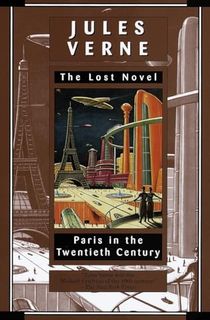
Paris in the Twentieth Century: The Lost Novel
In an 1860s vision of the year 1960, a young graduate named Michel is failed by society because his talents are in the arts and humanities, not in the dominant and ruthless fields of business and industry. He wanders a dazzling, technologically advanced but spiritually hollow city, becoming increasingly isolated and depressed in a world that has no use for human feeling or creative expression.
Written in 1863, the novel shockingly mapped out the physical landscape of modern life. Verne envisioned glass skyscrapers, high-speed rail, gasoline-powered automobiles, and the general dominance of an industrial, materialistic culture over artistic pursuits.
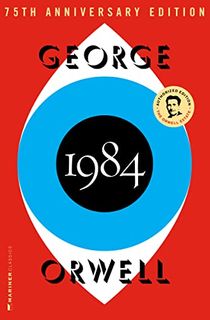
1984
In the totalitarian state of Oceania, thought, history, and language are controlled by the omnipresent figurehead Big Brother. Winston Smith, a low-ranking member of the Outer Party, begins an illegal affair and keeps a secret diary, desperately clinging to objective truth and individuality. This act of rebellion puts his life in direct danger, as he soon becomes a prime target for the dreaded Thought Police.
This foundational 1949 novel provided the definitive blueprint for modern surveillance and political paranoia. Concepts like "Telescreens" foreshadowed the pervasive nature of digital monitoring, while "Newspeak" and the constant manipulation of history anticipated modern government propaganda and misinformation campaigns.
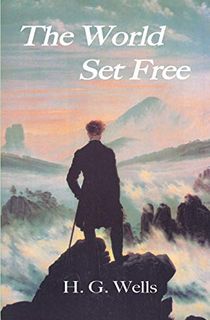
The World Set Free
The World Set Free chronicles a destructive global conflict in the 1950s, ignited when nations deploy powerful "atomic bombs"—devices made of artificially sustained, highly explosive elements. The terrifying devastation forces the remnants of global powers to meet in Switzerland and reluctantly create a world government to ensure the permanent cessation of warfare.
In 1914, Wells not only coined the term "atomic bomb" but detailed a destructive world war and a subsequent arms race fought with this terrifying new technology. The novel is a chilling forecast of both nuclear warfare and the subsequent attempts at international political cooperation in the nuclear age.
The Machine Stops
In the distant future, humanity lives in isolated underground cells, entirely dependent on a massive, all-powerful, global mechanical system called "the Machine." When Kuno begins to question the sanctity of the Machine and attempts to travel to the surface world, his mother, Vashti, must defend their comfortable digital existence from his revolutionary, manual curiosity.
This early 1909 novella accurately predicted humanity’s total dependence on an interconnected, mechanical network—an absolute forecast of the internet and virtual reality. It’s a profound early warning about the seductive dangers of digital isolation and the decline of interactive knowledge in an automated, screen-reliant world.
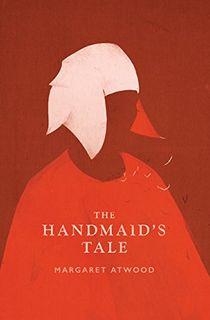
The Handmaid's Tale
Following an ecological collapse and a severe fertility crisis, the United States is overthrown by a religious regime that establishes the Republic of Gilead, where women are stripped of all rights. Offred, a fertile woman designated a "Handmaid," is assigned to a high-ranking official solely for the purpose of procreation, forcing her to navigate a dangerous landscape of oppression, surveillance, and desperate resistance.
Atwood's 1985 dystopia provided a terrifyingly plausible blueprint for how societal control could be stripped away under the guise of religious zeal and environmental crisis. It remains highly relevant to modern political and reproductive rights debates, anticipating contemporary discussions around climate change, and the control of female autonomy.
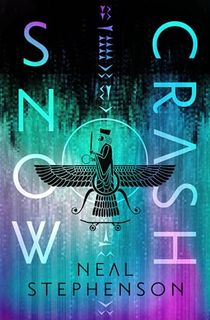
Snow Crash
In a decentralized, corporatized future, a hacker and pizza delivery driver named Hiro Protagonist must enter the massive virtual reality world known as the Metaverse to stop a viral, brain-altering computer virus. The novel blends mythology, linguistics, and computer science as Hiro races to save both the virtual and physical world from a sinister cult leader.
Stephenson’s 1992 novel didn't just predict the modern architecture of the internet; it created the term "Metaverse" itself, along with concepts like digital avatars, cryptocurrencies, and massive multiplayer online worlds. It's an essential text for understanding the blurring line between the physical and digital society we inhabit today.
Featured image: Wallace Henry / Unsplash
